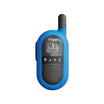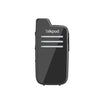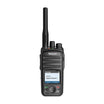Radio communication, dating back to the late 19th century, has evolved from Morse code to the advanced two-way radios we use today. The development of the "walkie-talkie" in the early 20th century marked a significant leap in mobile communication, mainly for military applications. Now, with the integration of mobile technology, two-way radio communication has expanded into the LTE/PoC (Long-Term Evolution/Push to Talk Over Cellular) domain.
What is an LTE/PoC Radio? LTE/PoC radios merge traditional two-way radio functionality with cellular network capabilities, providing nationwide communication through multi-network roaming SIM cards. This technology ensures the strongest available signal, making it ideal for businesses with mobile personnel needing wide-scale communication.
Appearance and Set-Up LTE/PoC radios may look like smartphones, but many maintain the traditional two-way radio design, complete with essential features such as emergency buttons and lone worker functions. Their setup and programming are flexible, often manageable over the air, with services typically offered via monthly subscriptions.
Comparing LTE/PoC and Two-Way Radios Two-way radios operate on radio frequencies and don’t depend on mobile networks, offering reliability in remote or limited network areas. Conversely, LTE/PoC radios leverage mobile or Wi-Fi networks for broad-reaching communication. The choice between them hinges on your operational scope and location, with LTE/PoC radios excelling in well-connected areas and two-way radios providing dependable communication in isolated or network-challenged environments.
For a detailed understanding and to explore Talkpod's range of communication solutions, visit Talkpod.com.









































